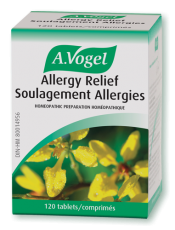What are pollutants?
Pollutants are any number of compounds that adversely impact the environment and human health.
What symptoms might be worsened by these pollutants?
Those suffering from allergens may find their nose become increasingly runny as the allergens irritate their nasal lining.
This makes the body think that some kind of bug is trying to get into the body and by increasing the amount of mucous, it impairs the ability of the bacteria or virus to get at the tissues.
You’ll also notice yourself coughing and sneezing more to try and expel the pollutants out of the airway.
Pollutants have also been shown to increase medication use and trips to the emergency room in children affected by asthma.
What are some of the heaviest polluters?
Unsurprisingly, secondhand tobacco smoke is the greatest indoor air pollutant. This raises a difficult conundrum because smokers may think that once the cigarette is butted out outside, that nothing gets brought in to the household.
Studies have shown that when children are born, that secondhand smoke that gets brought in is directly related to a child in the home developing asthma. It has also been shown to depress the body’s ability to fight off infections that settle in the respiratory system.
In large cities, vehicle exhaust is one of the largest pollutants – a deadly cocktail of various emissions such as nitrous oxides, carbon monoxide, and volatile organic compounds or VOC’s. The impacts of these compounds on the health of Canadians is estimated to be in the tens of billions and results in approximately 7,700 premature deaths annually across the country.
Let’s take a moment to dispel some of the common myths that might be increasing local pollution in your neighbourhood and the allergy symptoms of everyone in it:
Myth - I need to idle my car during the winter to make it warm.
Modern engines only need about 30 seconds of idling and the car will warm up much faster by driving it around. Idling in the cold weather actually causes progressive wear and tear damage on your vehicle as the cooler temperatures cause incomplete combustion that leaves residues in the vehicle parts. This incomplete combustion also releases byproducts into the air which increases the level of pollutants surrounding you and your family.
Myth – The air inside my home or car is cleaner than the outside city air.
The homes of today are far more energy efficient than those built decades ago where a fireplace was needed in every other room just to keep the chill away. That’s a lot of wood to be burning through the winter!
The homes now have insulation and tight seals to ensure there is a minimal amount of air exchanged with the outdoors. The old adage about how your parents are not paying to heat the outside still stands as any gaps or poorly sealed areas can quickly add to your energy bill.
The trade-off to achieve this level of efficiency also means that unless we open a window, the air fails to circulate and there’s no exchange, allowing levels of pollutants to quickly accumulate in the home and cause health issues. With humans spending upwards of 90% of their day indoors, it’s important to circulate the air whenever possible by cracking open those windows.
Myth – There isn’t a whole lot I can do to cut down on pollution. Those big corporations need to do more!
There are so many ways you can help cut down on both indoor and outdoor pollution to protect your own health. Choosing to carpool can reduce fuel consumption and reduce the number of vehicles on the road releasing toxic compounds into the air.
House plants such as Devil’s Ivy, Lady Palm, Rubber plant, Dracaena, and Boston Ferns have all been shown to remove chemical vapors such as VOC’s, ozone, formaldehyde, and benzenes from the air.
Finally, replacing the everyday paraffin candles with beeswax candles is not only a way to support our buzzing friends, but beeswax is known to provide defense against microbes including those found in the air that may irritate the lining of the respiratory tract.
Thanks for that information, but I still need something to help me now since my allergies are killing me!
If you’ve tried all of these and still have that annoying itch, products such as the homeopathic remedy Allergy Relief can help eliminate the toxins that overload the immune system.
A clinical study demonstrated a self-reported improvement in allergy symptoms in 88.5% of participants. The product also comes in tabs, a nasal spray, and a tincture for your convenience.
A key draw of Allergy Relief is that it doesn’t have to simply be used when you feel your allergies flaring up, it can be used prophylactically to ensure the symptoms don’t flare up when exposed to pollutants.
References
https://www.iisd.org/story/costs-of-pollution-in-canada/
https://journals.sagepub.com/doi/abs/10.1177/2040622315587256
https://www.mdpi.com/1660-4601/14/11/1286
https://www.ncbi.nlm.nih.gov/pmc/articles/PMC3230460/
https://www.ncbi.nlm.nih.gov/pmc/articles/PMC3736369/
https://www.ncbi.nlm.nih.gov/pmc/articles/PMC5545671/
https://www.ncbi.nlm.nih.gov/pmc/articles/PMC6086207/
https://www.ncbi.nlm.nih.gov/pubmed/9105797
https://www.ncbi.nlm.nih.gov/pubmed/27101450
https://www.ncbi.nlm.nih.gov/pubmed/27633295
https://ntrs.nasa.gov/search.jsp?R=19930073077





